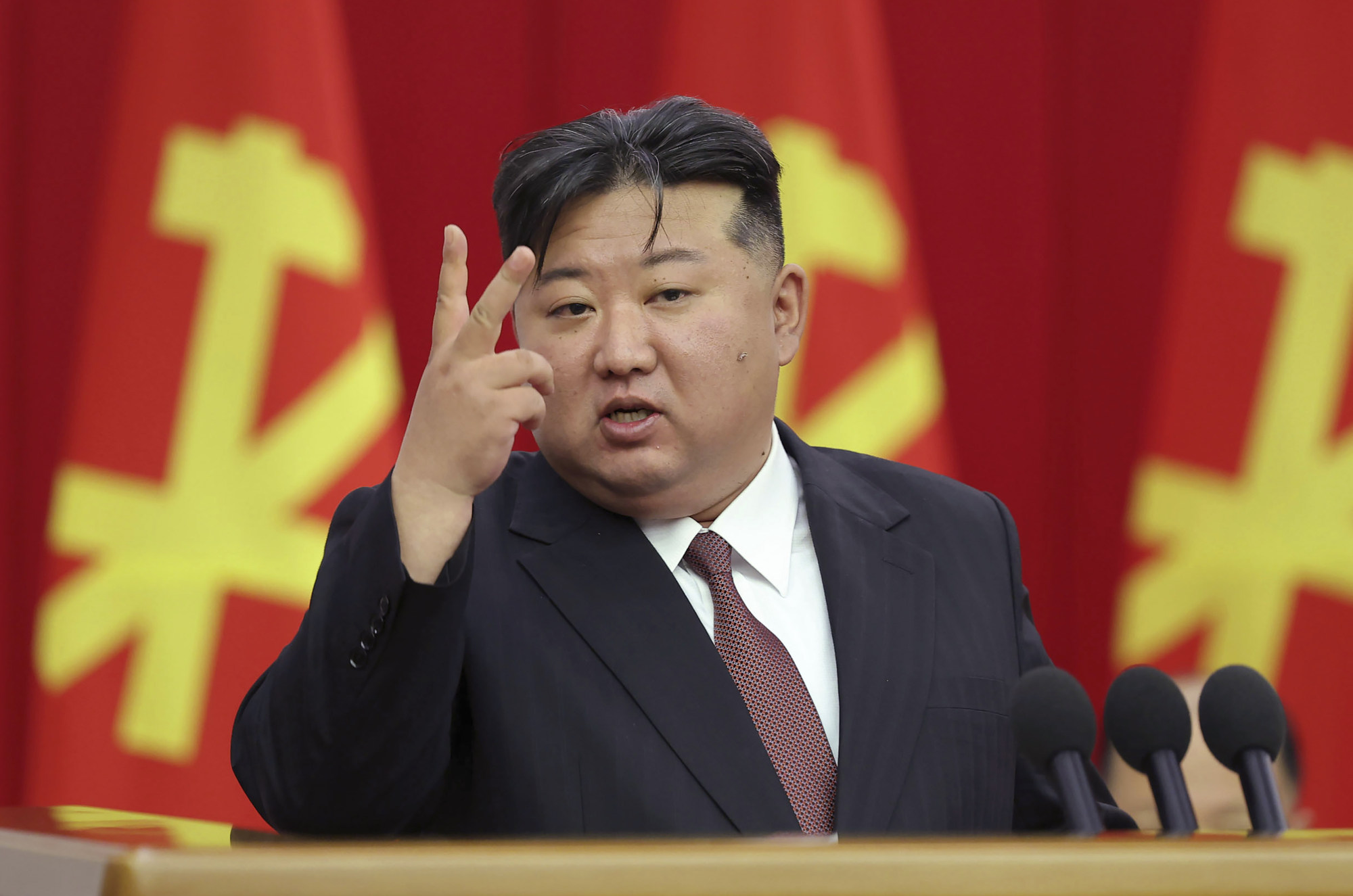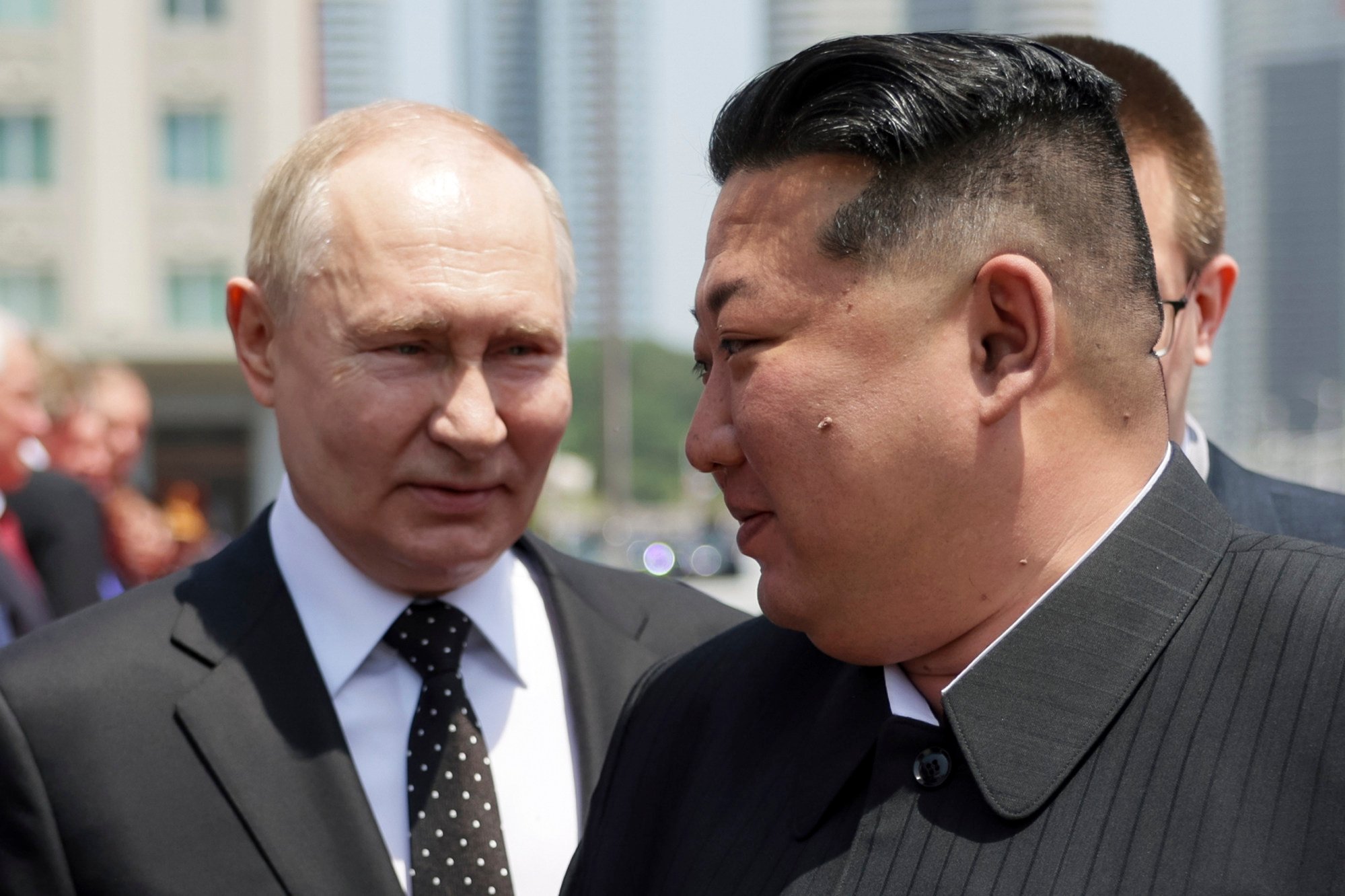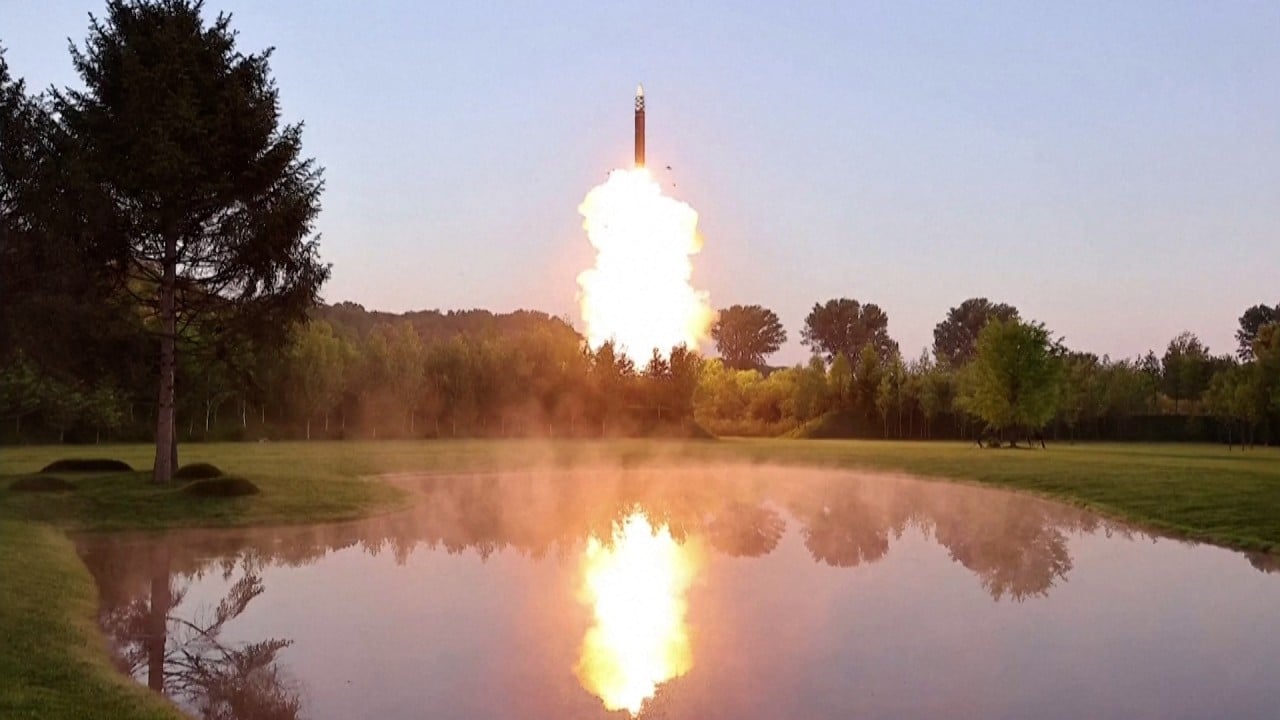North Korea touts super-large missile test Seoul says is a ‘deception’
It did not elaborate on the nature of the simulated warhead.
North Korea’s report on the missile test was likely “deception” with one of the two missiles flying abnormally and appearing to show up in a field not far from Pyongyang, Seoul’s Joint Chiefs of Staff spokesman Colonel Lee Sung-jun told a briefing.

“Conducting a test-fire inland is extremely rare and it is highly likely to be false to claim it has succeeded,” Lee said.
South Korea’s military conducted artillery drills at ranges within 5km (three miles) of the Military Demarcation Line inside the Demilitarized Zone separating the two Koreas on Tuesday morning, an army official said during the briefing.
The country’s Missile Administration will conduct another launch of the same type of missile in July to test the “explosion power” of the super-large warhead, KCNA said in a rare disclosure of a future missile launch plan.
The Hwasongpho-11, or Hwasong-11, is a series of short-range ballistic missiles developed by the North that are otherwise known as KN-23 and KN-24.
South Korea’s military said on Monday the first of the two missiles launched by the North appeared to be a KN-23 that flew about 600km (373 miles).
North Korea and Russia deny any arms trade, but their ties have rapidly developed since their leaders met in September in Russia pledging closer military cooperation.
South Korean officials have said North Korea’s recent short-range ballistic missile launches may be intended to show its wares to potential buyers.
The second missile launched on Monday flew about 120km, the South Korean military said. Given the trajectory and the location of the launch near the west coast, the missile likely fell inland in North Korea, South Korea’s military said.

On Tuesday, KCNA reported the North’s ruling Workers’ Party Central Committee concluded four days of policy meetings led by its leader Kim.
The report said Kim highlighted the progress made in the industrial and agricultural sectors in the first half of the year and presented goals and strategy for the second half.
In a departure from usual reporting on his fiery remarks on arms development and anti-US struggle at similar meetings, KCNA made scant mention of any discussion on defence or foreign policy, only saying Kim gave directions for its armed forces.
